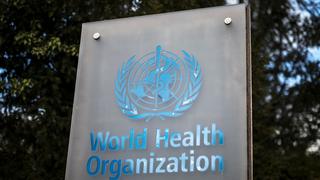
WHO director of Environment, Climate Change and Health, Maria Neira, emphasises scaling up existing programs like providing access to LPG and subsidies to reduce household air pollution | Image used for representational purpose only
| Photo Credit: AFP
Transitioning to cleaner energy is crucial for India, considering 41% of households still rely on biomass fuel, resulting in increased mortality and morbidity
India’s air quality is far short of World Health Organization (WHO) standards and more than 40 per cent of its population still relies on biomass fuels, leading to deaths every year, an official from the United Nations body has said.

Transition to cleaner energy
In an exclusive interview with PTI Videos, Maria Neira, director of the Department of Environment, Climate Change and Health at WHO, urged the Indian authorities to scale up existing programmes, particularly those aimed at reducing household air pollution caused by the use of biomass fuels for cooking.
“We need to consider programmes like providing access to LPG and subsidies, but of course, the effort has to be not only maintained but probably scaled up,” Neira told PTI.
“As per a think tank report, 41 per cent of Indian households still rely on biomass fuel, resulting in more mortality and morbidity. We would like to call on the Indian government to accelerate and scale up the leadership that they have shown when they put programmes in place to combat household pollution, because it has shown good results when implemented,” she said.
The WHO official said it would be ideal to immediately transition to cleaner energy and renewable non-pollutants, but with fairness at the centre of the policy.
“We recognise that there has to be a fair transition, particularly for those most vulnerable who are currently using polluting sources. That transition through better sources of energy will include access to LPG, biogas, ethanol, they can ensure transition while protecting the health of the people,” she said.

Air pollution and non-communicable diseases (NCDs)
Neira said air pollution is a major contributor to noncommunicable diseases, or NCDs, which would be the subject of a resolution at the upcoming United Nations General Assembly in September.
“We need to make sure that the NCDs community understands that by tackling air pollution, we are contributing enormously to reducing the burden of NCDs,” she told PTI.
Asked about the gap between air quality standards, Neira referred to recent findings published in The Lancet Planetary Health, noting that poor air quality was not limited to Delhi but all regions across the country.
“There’s a study which shows that we always focus on New Delhi when it comes to pollution, but I’m afraid it’s almost all of India where WHO standards on AQI are not implemented,” she said. “One thing is to distance slightly from WHO standards, and another is to go really far beyond them. Air pollution is a public health issue in India, and it needs more political engagement to accelerate the actions already in place.”

Air quality standards and implementation
The official stressed that the country has the resources, innovation and technology to combat pollution. “We have a lot of hope that India can change the situation completely and even set an example for other countries.” Talking about WHO’s Green Page that helps paediatricians track environmental risks in children’s health, Neira highlighted their efforts to educate and train health professionals on recognising and addressing environmental health risks.
She said that a central part of the initiative is the use of the Green Page – a tool that helps paediatricians and other doctors track environmental exposures in children’s health records.
“We want medical professionals to understand what air pollution represents as a health risk and how to promote interventions. The Green Page allows pediatricians to go beyond prescribing medicine, it helps them investigate the environmental causes of respiratory and other conditions. This tool is part of a broader training package we are promoting globally,” the director said.

WHO initiatives and collaborations
Neira also termed as powerful the grassroots movements, like the mothers’ groups that advocate for better air quality. “Many of these movements started in remote areas. Through the Breathe Life campaign, we are trying to create a network, bringing all of them together and making sure that they increase their power.” Asked about the commitments made by around 50 countries and cities during the recent WHO conference, Neira said the WHO has established mechanisms to monitor the commitments.
“We want to work with UN agencies where needed, looking at how to monitor the commitments by sector, and then, of course, through Breathe Life, C40, and other mechanisms, we aim to monitor at the city level,” she said.
The Breathe Life campaign is a global initiative, led by the WHO and the Climate and Clean Air Coalition (CCAC), to raise awareness about the harmful effects of air pollution and mobilise communities to take action for cleaner air.
Published – April 17, 2025 05:17 pm IST











Leave a Reply